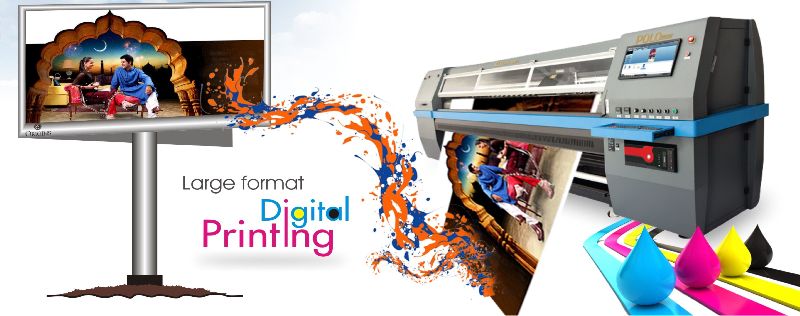5 Simple Techniques For Digital Printing
5 Simple Techniques For Digital Printing
Blog Article
Top Guidelines Of Digital Printing
Table of ContentsWhat Does Digital Printing Do?Not known Facts About Digital PrintingDigital Printing Things To Know Before You BuyTop Guidelines Of Digital Printing8 Simple Techniques For Digital PrintingDigital Printing Can Be Fun For EveryoneThe Facts About Digital Printing RevealedDigital Printing Things To Know Before You Buy
Modification likewise allows services to stick out in a congested market by creating one-of-a-kind advertising and marketing products that distinguish them from their rivals. One of the primary advantages of electronic printing is the capacity to print variable information. Each published piece can be distinct, enabling businesses to produce customized marketing materials that speak straight to their target market.Digital printing additionally enables for modification in the layout of advertising and marketing products (Digital Printing). With digital printing, services can develop designs that are special and customized to their details needs.
The Best Guide To Digital Printing
This advantages services that want to test different advertising and marketing techniques or launch new services and products. By publishing smaller amounts of marketing products, services can decrease waste and stay clear of the need for excess inventory. Digital printing is also versatile. It can publish on different products, consisting of paper, cardstock, vinyl, and metal.
By making use of various materials and formats, businesses can create distinct advertising products that stand out from their competitors and stand out from their target audience. Digital printing also uses uniformity. With typical printing methods, there is often variation between prints due to differences in ink protection, pressure, and other aspects.
This uniformity can assist build client trust and reputation, showing that the company is committed to offering high-grade materials. Uniformity is specifically important for organizations that intend to develop consumer trust and trustworthiness. By ensuring that every print is regular, organizations can reveal that they are dedicated to providing high-grade materials and paying focus to the details.
Some Known Details About Digital Printing

On top of that, electronic printing creates less waste because it can print as needed and in smaller sized amounts, minimizing the demand for excess inventory and materials. Digital printing likewise uses much less power compared to conventional printing techniques. Digital printers do not need as much power to operate, as they do not require to warm up as a lot or utilize as much power to run.
Some Ideas on Digital Printing You Need To Know

Countered printing requires a plate for each and every color printed. Traditional balanced out printing is a print technique that uses aluminum plates to transfer ink onto a rubber sheet (typically described as a "blanket"). The photo is then rolled onto the printing surface. This printing approach is thought about "balanced out" due to the fact that the ink is not transferred to the paper directly.
What Does Digital Printing Mean?
Countered printing enables for a wide array of print materials to be used throughout production. The high-quality photos produced via balanced out printing make it the preferred approach, particularly amongst graphic developers, when seeking the best color reproduction, information, and professional-looking prints.
For electronic inkjet printing, ink is transferred straight onto the surface. Rather than relying on aluminum plates and rubber coverings to move an image, digital printing makes use of liquid ink during manufacturing.
The Facts About Digital Printing Revealed
Because offset printing can blend personalized shade inks for each task, it will normally obtain the colors basics spot-on. Count on countered printing for tidy, distinctive kinds and pictures without touches or areas.
It costs a lot to start an offset work. You need to invest money into creating home plates, which requires time. Once you have actually invested it, all of the materials are all set to go, and you'll spend less on large balanced out jobs than a digital print, which is about the very same per piece no matter just how huge the work obtains.
Each print equals. You take the chance of fewer strange variations triggered by imbalances in water and ink. Digital printing is much less pricey for low-volume work. The rate per unit drops for electronic printing, so at some point, they crisscross. Transforming information within a solitary print job. For instance, claim you were printing out postcards marketing a concert.
The Of Digital Printing
While electronic printing or inkjet printing is the favored option in the existing times, there are engaging reasons to convert from offset why not try this out to electronic printing systems. When publishing balanced out or digitally, important decisions and processes are involved in shade matching.
Whichever the instance, the shade will need to be matched. Shade matching of electronic printer ink is no longer challenging with dyes and pigments. Industrial inkjet printing supplies versatility for printing on several substrates. Digital printing is perfect for customers that do not need longer runs and warehousing materials.

One advantage of digital printing is selecting from a wide variety of digital substratums. With countered printing, substrates make up, generally, 30% of the expense of the work. With electronic printing, the cost of the substrate in the general work is tiny. This enables more options than in the past, which's good for marketing professionals and organizations.
A Biased View of Digital Printing
Tools expenses in inkjet printing are much reduced than offset printing you can try these out as there are no plate-making, plates, and press expenditures. Beyond the resources cost, the prepress equipment and printing presses call for highly skilled drivers in offset printing, which adds labor expenses.
Report this page